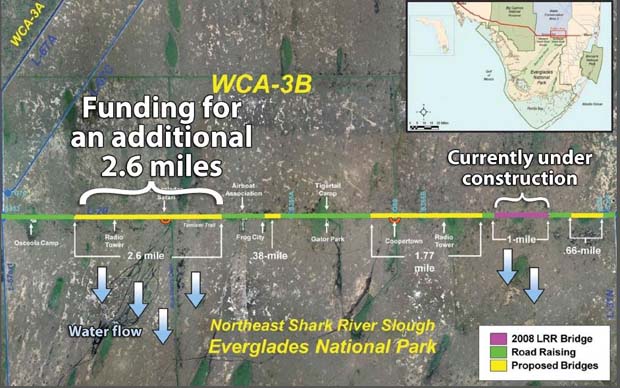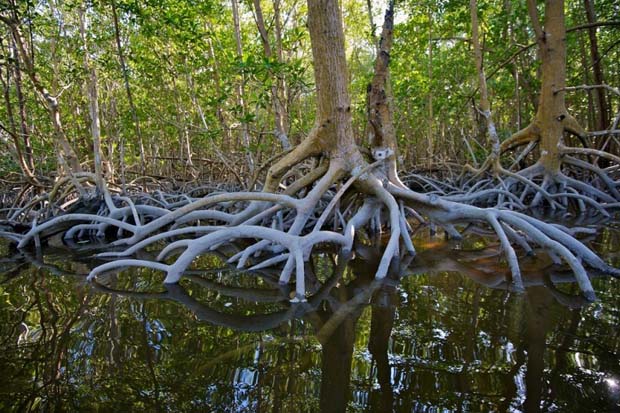Major project will direct water south to protect regional estuaries
[dropcap]L[/dropcap]ast week, Governor Rick Scott of Florida announced a $90 million state commitment for the bridging of a 2.6 mile segment of Tamiami Trail road in South Florida. The project would deconstruct a section of the berm that Tamiami Trail road is currently built on, and replace it with a bridge so that water north of the road could flow into the Everglades, providing needed water to the Everglades National Park. The end effect would be to keep more high nutrient water from entering the Caloosahatchee and St. Lucie Estuaries.
Governor Scott said, “This $90 million investment will be a huge step forward in our efforts to restore water quality throughout South Florida. Every drop of water that we can send South and keep out of the Caloosahatchee and St. Lucie Estuaries is a win for Florida families. My message to families being impacted is that we will not give up on you. We are putting forward strategies each and every day to address the water quality issues that are impacting families in our state.”
 Tamiami Trail
Tamiami Trail
Today’s setup of the Tamiami Trail inhibits water flow, which forces more storm water runoff to drain from Lake Okeechobee into the Caloosahatchee and St. Lucie estuaries, instead of flowing South through the Everglades. By constructing an additional bridge, more water will be able to flow naturally through the Everglades, which will keep nutrient rich water out of the estuaries.
The total cost of 2.6 miles of bridging is estimated to be $180 million. The State of Florida will make a commitment to match federal funds for this project, up to $30 million/year over three years or $90 million total from the Florida Department of Transportation (FDOT) work plan. One of the most critical components of Everglades restoration is increasing water flow under Tamiami Trail into Everglades National Park.
The ultimate completion of the project will provide numerous benefit to the region, including:
* Passing an additional 215,000 acre/feet of water from the northern part of the system, including Lake Okeechobee, to the south;
• Aiding in the reestablishment of historical seasonal water depths and flooding durations that are critical to the survival of many fish and wildlife species;
• Allowing water managers additional flexibility to deal with regional and system wide flood protection; and
• Providing water managers flexibility in addressing Lake Okeechobee seasonal high water levels.
The SFWMD is taking emergency action to store excess water on public and private lands and this fall the SFWMD will begin work on a $16 million project at Lake Hicpochee, to help control flows into the Caloosahatchee.
Current Caloosahatchee Actions:
The Governor said, “In addition to our long term investments, we’re working with the water management district and local partners to take aggressive action on both coasts to mitigate the harmful impacts to families.”
In addition, the Governor’s Florida Families First budget invested $3 million to create an innovative wetland treatment system in Hendry County that cleans water flowing through the Caloosahatchee River.
Governor Scott said, “In addition to these measures by the state, we need the federal government to step up and authorize the C-43 project in Hendry County. This project will help keep storm runoff from impacting the Caloosahatchee and we need Congress to act.”



Join the discussion One Comment